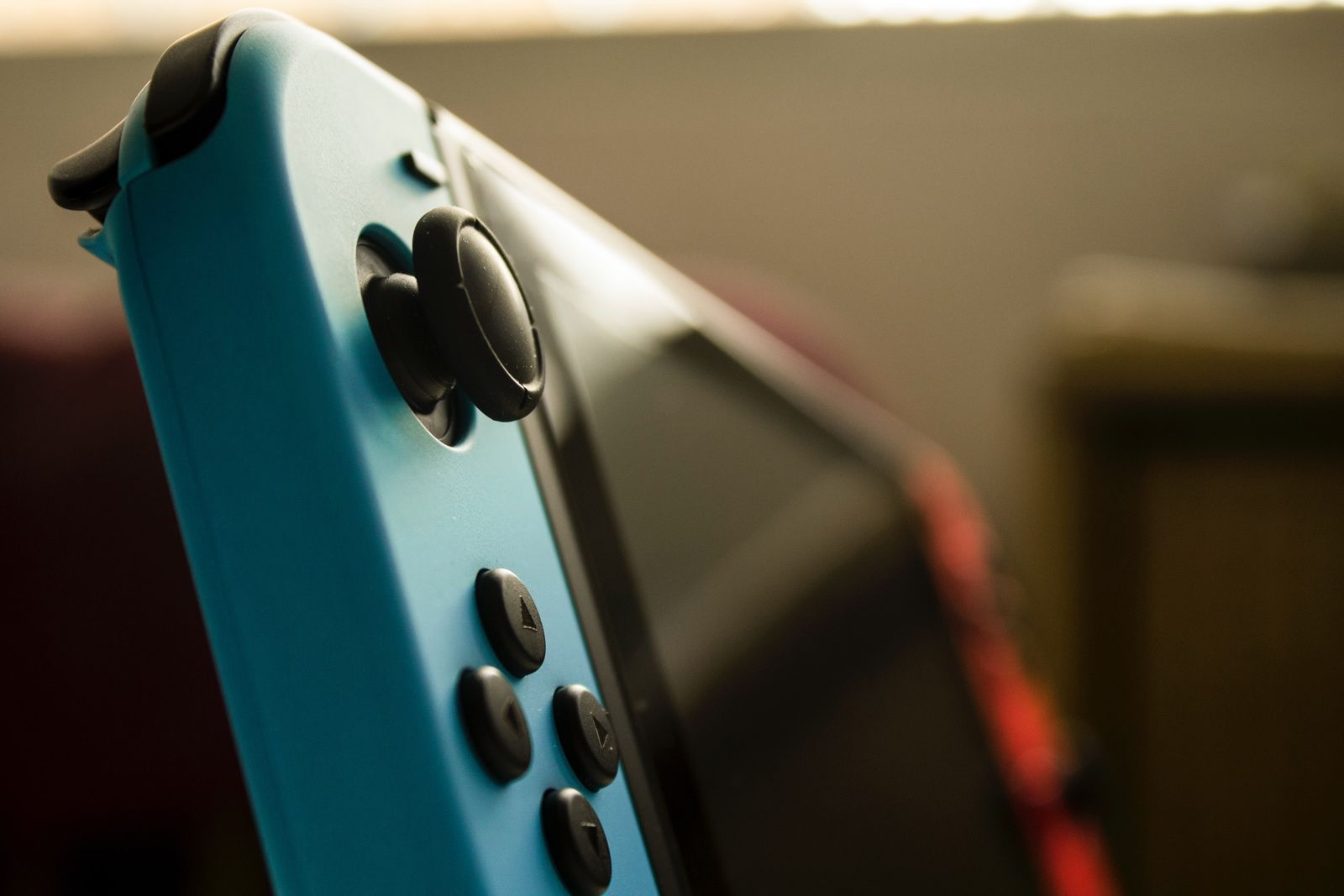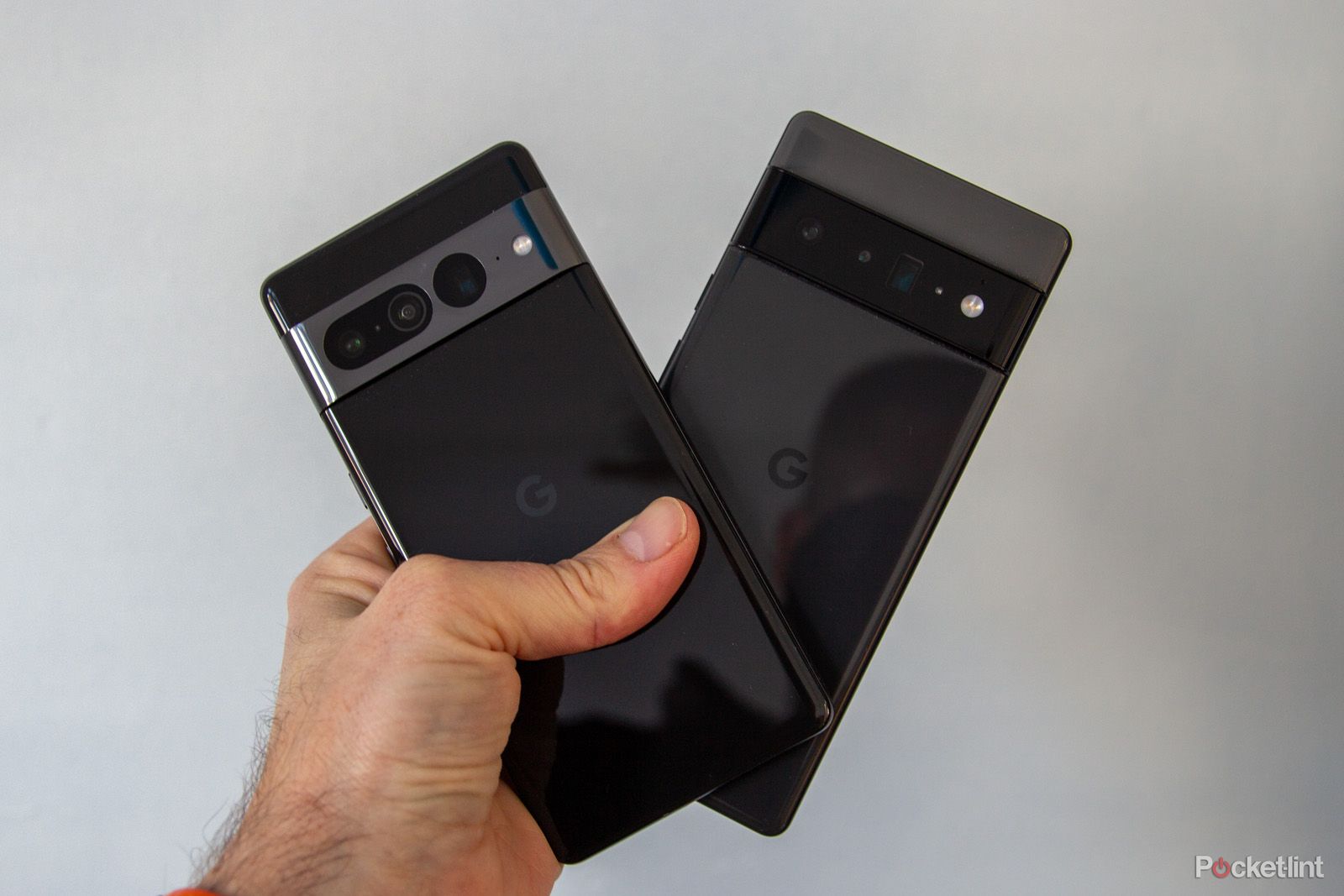Google announced the Pixel 7 and Pixel 7 Pro alongside the Pixel Watch during an event on 6 October 2022, following a brief tease of the devices during Google I/O earlier this year.
We've covered how the Google Pixel 7 Pro and Pixel 7 compare to each other in a separate feature, but here we are looking at how the Pixel 7 Pro compares to the Pixel 6 Pro.
Should you upgrade and what are the differences if you're choosing between the Pixel 7 Pro and Pixel 6 Pro?
Price
The Google Pixel 7 Pro starts at the same price as the Pixel 6 Pro started at in the US and the UK - meaning $899 and £849. It's currently under pre-order, with those in the UK able to claim a free Pixel Watch, while in the US there are some appealing trade-in deals.
The Google Pixel 6 Pro is still listed by Google at that price, but there's plenty of offers to get a cheaper deal on the older phone.
The Pixel 7 Pro is now in general retail.

nintendo switch
The Switch is still a stunning bit of kit.
Design
- Pixel 7 Pro: 162.9 x 76.6 x 8.9mm, 212g
- Pixel 6 Pro: 163.9 x 75.9 x 8.9mm, 210g
The Google Pixel 7 Pro shares a similar design to its predecessor, including the prominent camera housing that spans the width of the rear, though there are some refinements. The Pixel 7 Pro doesn't have a two-tone rear like the Pixel 6 Pro and the camera housing is metallic instead of glass, which sees the lenses stand out more.
It's now a single piece on the Pixel 7 Pro, part of the frame of the phone, so it's a more seamless design than the Pixel 6 Pro.
From the front though, the Pixel 7 Pro looks almost identical to the Pixel 6 Pro with a slightly curved display and a punch hole camera at the top in the centre. An under-display fingerprint sensor is present and the Pixel 7 Pro measures around the same as its predecessor, fractionally smaller in height but larger in width. It is also slightly heavier.
The Pixel 6 Pro is IP68 water and dust resistant, which the Pixel 7 Pro is too. Colour options differ between the two models though, with the Pixel 6 Pro available in Stormy Black, Cloudy White and Sorta Sunny. The Pixel 7 Pro meanwhile comes in Snow, Obsidian and Hazel.
Overall there's little real difference, although the buttons on the Pixel 7 Pro are slightly low on the side, so you can't swap cases between the two models.
Display
- Pixel 7 Pro: 6.7-inch, Quad HD+, LTPO OLED, 120Hz
- Pixel 6 Pro: 6.7-inch, Quad HD+, LTPO OLED, 120Hz
The Google Pixel 7 Pro offers very similar display specifications to the Pixel 6 Pro.
The Pixel 6 Pro comes with a 6.7-inch LTPO OLED display that offers a variable refresh rate between 10Hz and 120Hz. There's a Quad HD+ resolution on board, delivering a pixel density of 512ppi, and there are features including an Always On Display, HDR support, a high brightness mode, Now Playing and At A Glance.
The Pixel 7 Pro also comes with a 6.7-inch LTPO OLED display with up to 120Hz refresh rate and a Quad HD+ resolution for a pixel density of 512ppi. It offers a higher brightness than the Pixel 6 Pro though at 1500nits. Elsewhere, the same features are on board, including an Always On Display and HDR support.
The Pixel 6 Pro and Pixel 7 Pro both offer Gorilla Glass Victus protection.

nintendo switch
The Switch is still a stunning bit of kit.
Hardware and specs
- Pixel 7 Pro: Google Tensor G2, 12GB RAM, 128/256/512GB storage, 5000mAh battery
- Pixel 6 Pro: Google Tensor, 12GB RAM, 128/256GB storage, 5003mAh battery
The Google Pixel 7 Pro runs on the company's next-generation Tensor chip, called Tensor G2. The chip should offer more power for photos, videos, security and speech recognition, although in real-world use, it doesn't feel much different to the older device.
The Titan M2 security chip is also on board and there is 12GB of RAM and a choice of 128, 256 or 512GB of storage.
The Pixel 6 Pro runs on the first generation of Google's Tensor chip but it offers the Titan M2 security chip too. Like the Pixel 7 Pro, there is 12GB of RAM, though storage options are limited to 128GB and 256GB.
The Pixel 6 Pro has a 5003mAh battery capacity, while the Pixel 7 Pro has a 5000mAh capacity. Both offer wired charging, wireless and reverse wireless charging.
Camera
- Pixel 7 Pro: Triple rear (50MP main + 12MP ultrawide + 48MP telephoto), 10.8MP front
- Pixel 6 Pro: Triple rear (50MP main + 12MP ultrawide + 48MP telephoto), 11.1MP front
The Google Pixel 7 Pro comes with a triple rear camera like the Pixel 6 Pro. There's a 50-megapixel main sensor, 12-megapixel ultrawide sensor and 48-megapixel telephoto lens, which is the same setup as the Pixel 6 Pro.
There are a few differences though. The Pixel 7 Pro has 5x optical zoom and 30x high resolution zoom, while the Pixel 6 Pro offers 4x optical zoom and 20x high resolution zoom. This is the biggest real difference, as the Pixel 7 Pro offers better performance over longer range zoom.
The Pixel 7 Pro also comes with a Macro Focus feature, which the Pixel 6 Pro doesn't offer, and there's a Motion Mode and Photo Unblur too. Elsewhere, the Pixel 7 Pro offers the same features as the Pixel 6 Pro, including Face Unblur, Magic Eraser, Real Tone and Night Sight.
However, the Pixel 7 Pro Night Sight camera is noticably faster, with the Tensor G2 credited with this increase in performance.
On the front, the Pixel 6 Pro has an 11.1-megapixel sensor with f/2.2 aperture, 1.22µm pixels, and a 94-degree field of view. The Pixel 7 Pro has a 10.8-megapixel front camera f/2.2 aperture, 1.22µm pixels and a 92.8-degree field of view. The Pixel 7 Pro front camera also supports face unlocking on the Pixel 7 Pro.
Conclusion
The Google Pixel 7 Pro features a similar - but refined - design compared to the Pixel 6 Pro, along with similar display specifications, battery and performance.
There are a couple of changes in the camera, so the overall photography package is better from the Pixel 7 Pro - although the main camera performance is pretty much the same.
If you can get the Pixel 6 Pro at a decent price, it may well be worth considering, because the actual experience of using these phones is very much the same. If you're a Pixel 6 Pro owner, there probably aren't a great number of reasons you'd want to upgrade.

